To choose a pillow, it is not enough to just have the desire to go to the store; you need to take into account a number of nuances that will help you get a truly sound sleep.
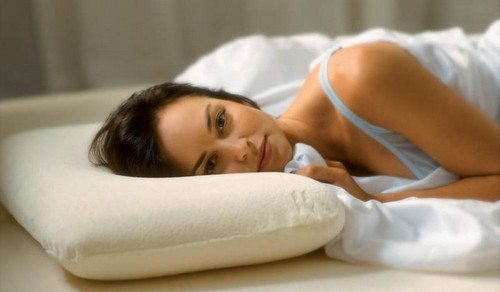
- Types of sleeping pillows
- Rules for choosing a pillow
- General requirements
- Size and shape
- Rigidity
- Height
- Case material
- Which natural filler is better to choose?
- Animal origin
- Vegetable origin
- Latex
- Which synthetic filler is better to choose?
- Manufacturing companies
- Tips for choosing a sleeping pillow
- Does the shape depend on the sleeping position?
- Orthopedic pillow
- For cervical osteochondrosis
- For a child
- Pregnant
- Reviews
Types of sleeping pillows
According to their shape, pillows are divided into:
- classic ones - a rectangle, familiar from childhood. There are printed and solid ones;
- anatomical (orthopedic) - curved for better physiological rest according to the shape of the body of the mind. Made of material that can retain “memory” for a long time - latex, polyurethane foam, “memory forms”.
Depending on the type of filling, pillows are divided into:
- Natural, containing wool, feathers, raw materials of animal origin (silk). Contains allergenic filler.
- From plant materials, sometimes exotic: algae, grass, eucalyptus, corn, buckwheat, bamboo.
- Containing artificial fillers: hollow siliconized fiber, all kinds of “fibers”.
- Consisting of orthopedic materials: memory form, polyurethane foam, latex, which have a “memory” of shape.
- Combined - with inclusions differing in composition (additional inserts).
Rules for choosing a pillow
For better sleep, you need to know the following nuances:
- Having allergies. Do you have a reaction to animal fur? Please read the annotation to avoid any surprises.
- Orthopedic medical problems with the spine, the surface of the bed, including the pillow, must have combination features.
- Sleeping position – the choice of height depends on this.
- Conditions of everyday use, cost, material. If it is not possible to wash it regularly (take bedding to the dry cleaner), discard natural fillers.
General requirements
Size and shape
The classic square suits everyone. Also produced:
- soft “donut” (a roller specially adjusted to the shape of the body that unloads the spinal column);
- anatomically curved pillows (rectangular with protrusions, corrugated);
- combined, combining several types (standard with a bend in one direction, having stiffeners, protruding parts).
The following size formats are available: 70 by 70 or 50 cm; the “donuts” are longer due to their shape.
Rigidity
Three options will please all couch potatoes:
- hard (filled with horsehair, synthetic materials, latex);
- medium hardness (combination of artificial and natural materials, buckwheat);
- soft (down, feather, synthetic padding).
Combination pillows contain springs, inflatable parts, and filler inserts of different densities, which serve as structural elements to increase practicality, convenience, and health benefits.
Height
High pillows are considered to be a decimeter, low - less than 6-8 cm.It is necessary to select the parameters based on your sleeping position and the habit of tossing and turning.
For those in doubt, the variable height option, additional bolsters, and built-in inflatable devices are suitable.
Case material
A mandatory criterion is the naturalness of the shell material, because you will have to spend most of the night in close contact with the skin and fabric:
- silk – gentle, pleasant, delicate, durable;
- cotton (cambric, percale, teak) - soft, low price, wears out quickly;
- linen is easy to care for, provides a high level of comfort, has the ability to retain its original qualities for a long period of time, and cools the skin in summer.
- wool - warms, comfortable to the touch, requires special attention when processing, can cause skin irritation.
This filler will require a cover to hold the fluff. The more “volatile” the filler, the denser the latter.
Which natural filler is better to choose?
Animal origin
This includes litters obtained from pets.
- Feather. High cost, contraindicated for allergy sufferers. The higher the percentage in the finished version, the more expensive the pillow will be. Use only dry cleaning (every six months), after a couple of years you will have to update your “bed wardrobe” (down quickly breaks down during use). Firm pillows contain more feathers. But they are hygroscopic, fluffy, and completely natural.
- Sheep's wool. Strictly contraindicated for persons with allergies. If there is no such problem, then keep in mind that exploitation entails the irreversible option of “felt” the wool.Woolen items must be dry cleaned every six months; hand (automatic) washing is excluded.
- Horsehair is rare, technologically difficult to use; if necessary, a combination of soft fillers is added to increase rigidity. Repels moisture and dust, retains its shape, and becomes the basis for orthopedic products. Will last at least ten years.
Vegetable origin
Plant raw materials are the oldest known material for making bedding. You can choose the following options:
- Bamboo fiber is completely natural and hypoallergenic. Bamboo products can be machine washed, they dry quickly and are easy to use. The disadvantages are the lack of hygroscopicity and rapid loss of strength after getting wet. Dry bamboo fiber will readily become a home for a variety of microorganisms. A relatively durable material that retains its qualities for up to two years.
- Buckwheat husk - consists of many “scales” of buckwheat. With constant use, orthopedic material can “remember” the contour of your body, creating an internal frame of rough elements clinging to each other. Before entering the pillowcase, all husks are treated with steam and a sterilizing solution. Plus - the absence of excess moisture, hypoallergenic, and the ability to repel dust mites. Lasts for a couple of years.
- Herbs - usually the case is filled with plants such as hop cones, mint, lemon balm, rosemary, kelp, and sage. They have a calming effect and normalize sleep. Algae stimulates the immune system. There are options from cattail and fireweed. The soft fluff of these plants is pulled.In order for the pillow to serve for a long time, hard herbs are additionally added: straw, sedge, heather. They don’t last long, two to three months, and then they will need to be replaced. The exception is pine needles, service life is 12 months. Pillows made from herbs cannot be cleaned or washed; they must be shaken regularly to prevent ticks from infesting them.
- Silk is hypoallergenic. Does not pill, repels moisture, keeps its shape, and can last 10 years or more. The material rejects mold, mites and bacteria. The downside is the price; you need to choose class A (Mulberry) fiber fabrics. Also, such “thoughts” are not suitable for people who prefer a high base for their heads.
- Cotton is natural and economical. Disadvantages: small parasites readily live in “cotton” pillows; they quickly lose their shape, become compressed, and cannot be washed. Natural cotton wool has the ability to clump, which is why you will have to retire the item in a couple of years.
Latex
This is a foamed porous orthopedic substance made from the thickened sap of the Hevea tree, which retains its given shape. Convenient for the production of orthopedic products: high hypoallergenicity, the ability to repel sweat, a long service life (15 years) make sleep comfortable and care simple.
The price is high - the precious raw materials are collected by hand from the trees and must be thermally processed while the juice is liquid. Separately, there is artificial latex (polyurethane foam), which also retains its shape and is cheap to produce. Serves 5-10 years.
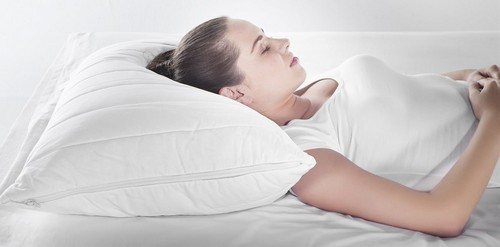
Which synthetic filler is better to choose?
There is a wide selection of the following artificial fillers on the market:
- Polyester - the material repels dust, is cheap, suitable for use by allergy sufferers.In the summer it can be hot, after ten months threads begin to come out of the seams, the “dumka” itself becomes flat and cakes. Inexpensive polyester accessories are bought as temporary summer cottage options.
- Holofiber is the same polyester, only additionally processed. The processed polyester fibers are twisted into “balls” and then coated with silicone, which makes the products less caking over time. It has all the disadvantages of the “parent”, the advantage is that it does not cake longer.
- Sintepon is batting compressed at high temperature. Do not wash frequently (it quickly deteriorates when exposed to moisture). The pillow is short-lived - after a few months of use, a “hole” will become noticeable near the place where the head is located during sleep, indicating the need for a new purchase.
- “Swan's down” is a polyester fiber, spirally twisted, then treated with silicone on top (another name is “thinsulate”). Lightweight, safe for asthmatics and sensitive people, practical (can be washed by hand or in a machine), unattractive to ticks. Disadvantage: electrification of fibers, reduced hygroscopicity. Fibers can electrify the hair, and with increased sweating of the scalp, the pillow itself can get wet. Does not tolerate bleaching. “Works” for at least 5 years.
- Silicone is polyester converted into hollow fibers. Washable with a bang at home, soft, easily restored to shape, it is used in orthopedic pillows. The price is attractive. Silicone is short-lived (the service life is the same as padding polyester).
- Foam (“memoriform”) – used for anatomical products.The viscoelastic consistency remembers the structural features of the body, maintaining orthopedic qualities for ten years. Parasites, mold, and fungi do not like to live here, which means that sensitive people can use “memoriform” items on a daily basis. It is not necessary to clean with abrasive substances, just shake periodically. The only downside is that they are expensive.
- Microfiber is a synthetic material, an analogue of natural fluff. Lightweight, durable, thin, repels odors, easy to clean, disadvantages: electrified and does not absorb water well, therefore impractical. The duration of an adequate “life” is five years.
- Viscoelastic – translated as “slowly restoring shape.” This is a porous fiber (flexible cells that allow free air circulation). Can't be washed, odors are repellent, price is high. A successful long-liver.
- Microgel is a synthetic filler, an analogue of down without its disadvantages (neutral for sensitive allergy sufferers). Can be washed at home, dries easily, hygroscopic. Microgel pillows will cost a decent amount, but their service life will be ten years.
Manufacturing companies
Russian stores sell pillows from the following companies:
- Christian Fischbacher - luxury class, supply bed linen and accessories of a high price category. Material: top quality down, polyester, silk, teak. Country: Switzerland.
- Hefel is an Austrian manufacturer. The high cost is due to manual production (a number of technological stages, preparation, processing of fabric), as well as our own original technologies for sewing thin cambric and making branded fillers.
- Sonex - make orthopedic accessories using Thinsulate, artificial materials, and mixtures. Production - Ukraine. Part of the raw materials is exported from outside (Germany, Austria, USA).
- TAC is a large Turkish company, specializing in: textiles, bedding, materials: satin, homemade jacquard. It has reasonable prices.
- Serafimovskaya Pushinka is an old Russian supplier of down and feather bedding products. They also sell “recyclables” (by-products of goose farming, clothing). The price is low.
- Crystal – “Turks”, use synthetics and natural fillers. The covers are calico, cotton from our own company. The products are cheap and short-lived.
- Le Vele is the choice of those who prefer Turkish high quality. They make all types of bedding, orthopedic, children's, down, bed linen, and related products.
- Kaufmann is a company that has existed for more than two centuries. The Austrian company's assortment includes many models, including children's accessories. They use mainly natural materials (silk, teak, cashmere), original fillings from their own suppliers: goose feathers, eider down. Prices are high.
- English Home is a telling name, but this is again a Turkish company. The list of fillers is quite scarce; you can choose: viscose, cotton, artificial fillers, wool. Middle price segment.
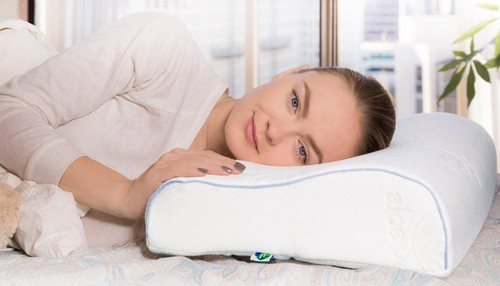
Tips for choosing a sleeping pillow
When sleeping on your side, to determine the correct height, take a measuring tape, then measure the distance between your shoulder point and the base of your neck. Let's get the shoulder width, it should be taken as the height of the pillow (it should be 10-13 cm).
To sleep on your stomach or back, take smaller values (8-10 cm).In addition, if the mattress is of high rigidity, choose a high “dumka”.
If you have already decided on the basic introductory parameters (material), pay attention also to:
- quality of seams - choose even, smooth ones so that the filler material does not extend beyond the stitches;
- the presence of a zipper - even if the pillow itself cannot be washed, this will greatly facilitate the task of maintaining hygiene;
- having no health contraindications, choose natural material for sleeping;
- the categorical absence of an unpleasant odor, for example, serving as a sign of marriage;
- cost – high can mask shortcomings, be more careful in your choice;
- the filler of your own mattress - the softer it is, the harder the pillow you should choose;
- annotation (labels) describing care methods, storage parameters, and origin of the product.
Does the shape depend on the sleeping position?
Sleeping completely on a flat surface is harmful to the spine; such a luxury is only allowed for children under the age of one year. The choice of “support” depends on the preferred position of the body when traveling to the kingdom of Morpheus.
- If you snore, it is advisable to maintain a “lying on your side” position while sleeping, purchasing a design consisting of two bolsters. Thanks to the subcervical eminence, it will be uncomfortable to sleep in any other way, as a result of which the body will automatically take the desired position. Here the shoulders and neck relax, and the spinal column is anatomically correct. Apnea will go away irrevocably, the circadian rhythm will improve, and the body will thank you with its mood in the morning.
- The “fetal” position in sleep is more often chosen by pregnant women and people with problems of the lumbar spine. It is best for them to purchase a “roller” that relieves a tense back.
- Sleeping “face down” is harmful, as a number of important arteries are pinched. Small thin pads with a small amount of filler that make the situation easier will help minimize the consequences.
- On your back is one of the most common positions that allows you to rest comfortably. Use a firm, low pillow and additional bolsters under your lower back and legs to relax your body muscles.
A sign of choosing the wrong pillow is an uncomfortable feeling after sleep, a desire to place your hand under your cheek, making a high cushion.
Orthopedic pillow
If you sleep on your side, measure from the base of your neck (above your collarbone) to the edge of your shoulder to make your choice. Add a couple of centimeters to the obtained value and you will get the height of the orthopedic roller. It may differ slightly (a centimeter or less, it is not necessary to follow an ideal match), then the roller will wrinkle under the weight of the body.
For those who like to sleep “face up”, a height of 6-11 cm is recommended. The basic rule: the softer the bed mattress, the higher, and the stiffer the orthopedic headrest is purchased (this also applies to “lounger beds”).
If you have doubts about your own calculations (when purchasing a pillow for a child), look for products stuffed with natural buckwheat husks (option: height-adjustable, inflatable material), capable of adjusting down to the millimeter.
Remember, any accessory only alleviates symptoms, preventing the development of the disease.
For cervical osteochondrosis
Patients with osteochondrosis should be guided by the following list when choosing an orthopedic companion on their journey through dreams:
- the optimal body position is the most relaxed, therefore constant sleep "face down" is harmful, the choice of pillow takes into account the factors of the position;
- it is better to lie on your side (back), choosing a moderate (10-11 cm) height of the bend;
- format - only rectangular (square), no "half-moons";
- prefer medium firmness, the width of the pillow exceeds the size of the shoulders.
The main criterion proving the correctness of the choice of pillow is the absence of discomfort in the morning after sleep.
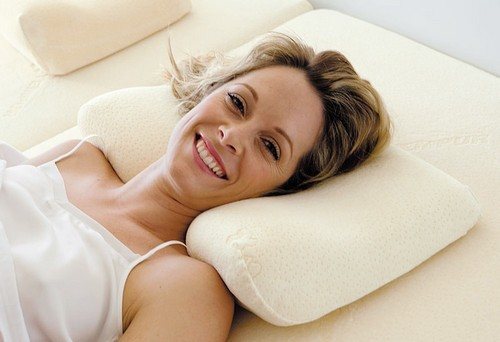
For a child
The selection parameters are proportional to age. When the child is already a schoolchild, "adult" rules are used. Otherwise:
- Newborns do without "dumochki", the only exception is a side bolster for an infant, which prevents rolling over (when the sleeping baby is restless, is able to take the "face down" position, then cannot turn back). Children over 2 years old should choose a cozy pillow filled with buckwheat - a natural plant material that allows air to pass through, repels moisture, and takes the shape of the body.
- If you are arranging a bed for a preschooler, your choice is an orthopedic pillow measuring 50x40 cm, flat, less than 10 cm high, forming a natural anatomical curve, and having a neutral material (filler).
- Types of pillow fillers
Pregnant
The main materials filling such pillows are holofiber, polystyrene foam balls. The outer cover should be chosen as a two-layer one, woven from natural fabrics, ensuring reliable retention of the contents of the loose material inside - for example, small parts of the filler.
The following pillows are offered to pregnant women:
Having the shape of the letter "C" ("banana").the optimal body position is as relaxed as possible, so constant sleep “face down” is harmful; the choice of pillow takes into account position factors;
- It is better to lie on your side (back), choosing a moderate (10-11 cm) bending height;
- format – only rectangular (square), no “crescents”;
- Prefer medium hardness, the width of the pillow exceeds the size of the shoulders.
- The main criterion that proves the correct choice of pillow is the absence of discomfort in the morning after sleep.
For a child
The selection parameters are proportional to age. When a child is already a schoolboy, “adult” rules are used. Otherwise:
Newborns do without “thoughts”, the only exception is the side bolster for the baby, which prevents turning over (when the sleeping baby is restless, is able to take the “face down” position, then cannot turn back).
- Children over 2 years old should choose a cozy pillow filled with buckwheat, a natural plant material that is breathable, repels moisture, and molds to the shape of the body.
- When setting up a bed for a preschooler, your choice is an orthopedic pillow measuring 50x40 cm, flat, less than 10 cm high, forming a natural anatomical curve, and having a neutral material (filler).
- Types of pillow fillings
- Children's bedding must be treated: washed, changed on time.
- Pregnant
- The main materials filling such pillows are holofiber and polystyrene foam balls. The outer cover should be chosen as a two-layer one, woven from natural fabrics, which ensures reliable retention of the contents of the bulk material inside - for example, small parts of the filler.
The following pillows are offered to pregnant women:
Shaped like the letter “C” (“banana”).For petite women, a length of 170 cm will be enough, tall women will have to look for a larger size. It will be useful to sit, half-lie down, the "banana" will save a tense back.
"Croissant" is a variation of the previous one, it has "long" ends, reaches 3.5 meters. Allows you to wrap yourself completely.
I-shaped, 170-190 cm long, 30-35 cm wide, suggests the option of sleeping "throwing your leg over". Simple, comfortable, therefore cheap.


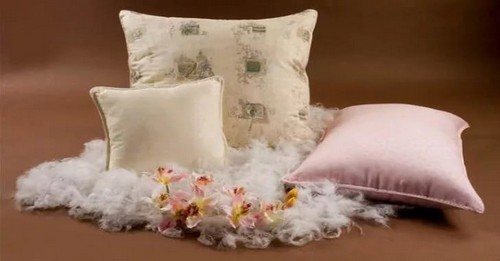
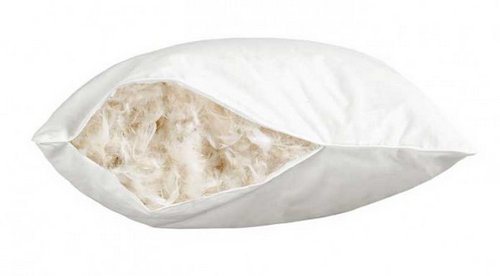
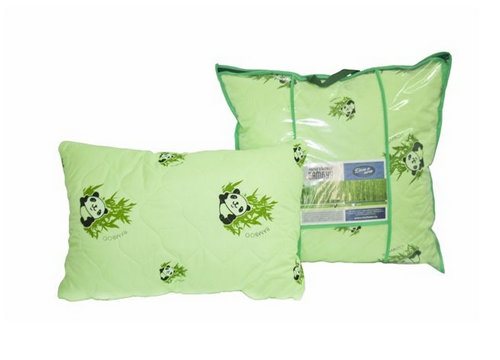
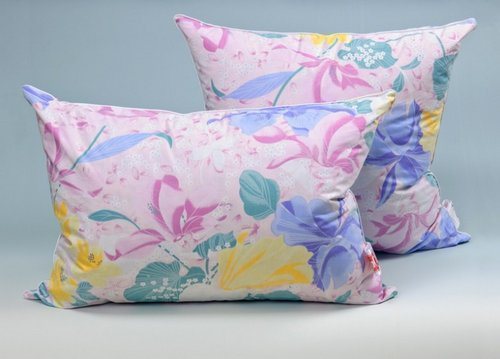
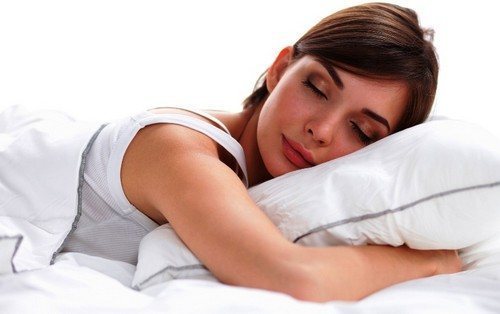
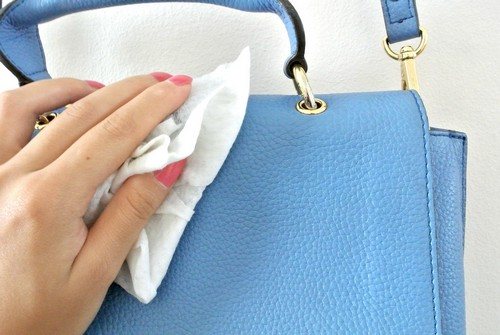
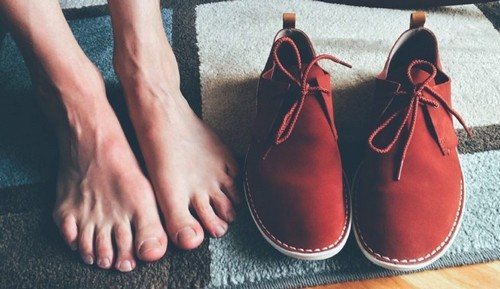
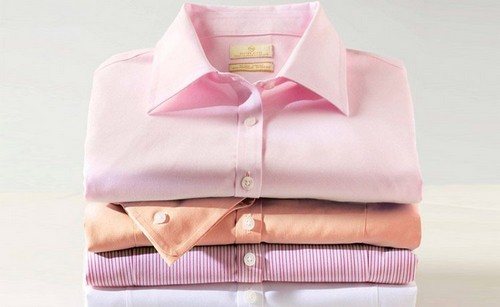
I-shaped, 170-190 cm long, 30-35 cm wide, suggests the option of sleeping “with your leg thrown over”. Simple, convenient, and therefore cheap.